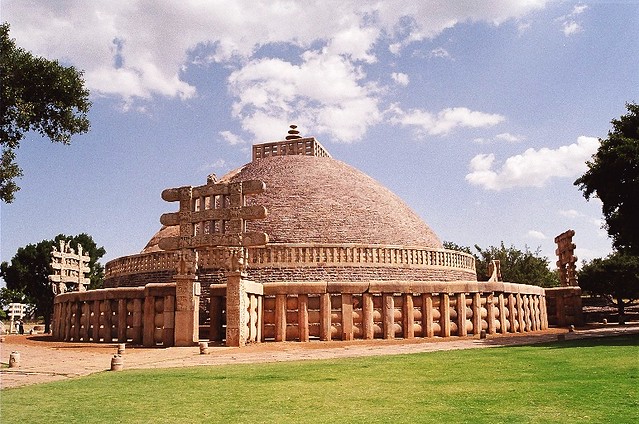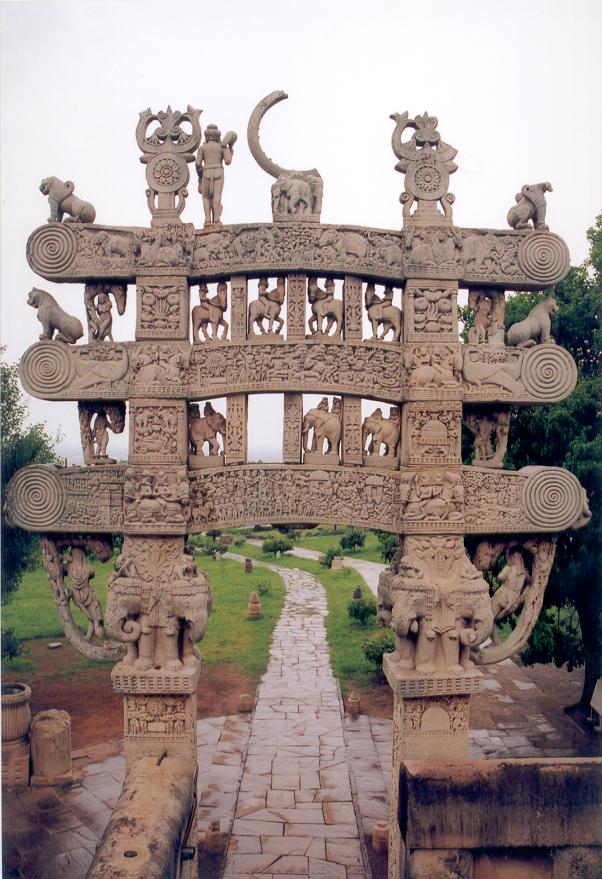Structure of the day_The Great Stupa, Sanchi
India's best-preserved and most extensive Buddhist site......
Image source :http://images.mapsofindia.com/
Dominating the Hill of Sanchi, India's best-preserved and most extensive Buddhist site, is the Great Stupa. Its hemispherical shape is believed to symbolize the upturned alms bowl of a Buddhist monk, or an umbrella of protection for followers of the Buddhist dharma (doctrine). The stupa's main glory lies in its four stone toranas (gateways), added in the 1st century BC. Their superb sculptures replicate the techniques of wood and ivory carving, and cover a rich variety of Buddhist themes.
BUDDHIST STUPA
India's earliest Buddhist monuments were stupas, large reliquaries in V'klich the ashes of the Buddha and other great teachers were interred. Solid throughout. the stupa itself is undecorated and designed to stimulate prayer and represent the path to divine understanding. As Indian traditions spread throughout Southeast Asia, the Buddhist stupa reached new heights of complex Buddhist symbolism. Borobodur Temple in Java, with its design and sculpture of the highest order, is probably the greatest monument of this architectural style.
Image source: http://static.panoramio.com/
THE JATAKA TALES
The Buddha's past lives are retold in this large collection of fables, in wh1ch an animal or bird often takes the part of the Buddha. The fables had great religious, moral, social, and cultural significance.
The Great Stupa and its West Gateway
Enclosing a smaller brick stupa built by Emperor Ashoka in the 3rd century BC, the Great Swpa is capped by a three-tiered stone umbrella symbolizing the layers of heaven.

Image source : https://farm1.staticflickr.com/
Circumambulatory Paths
The paths have balustrades carved with medallions of flowers, birds, and animals, and the names of the donors who funded them.
